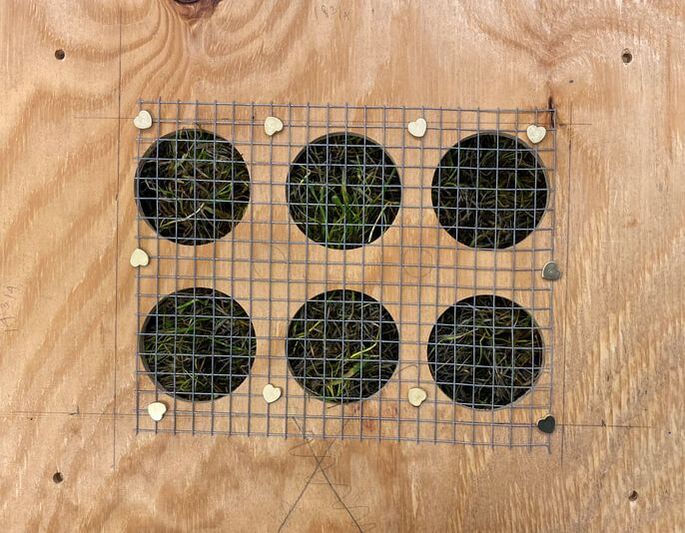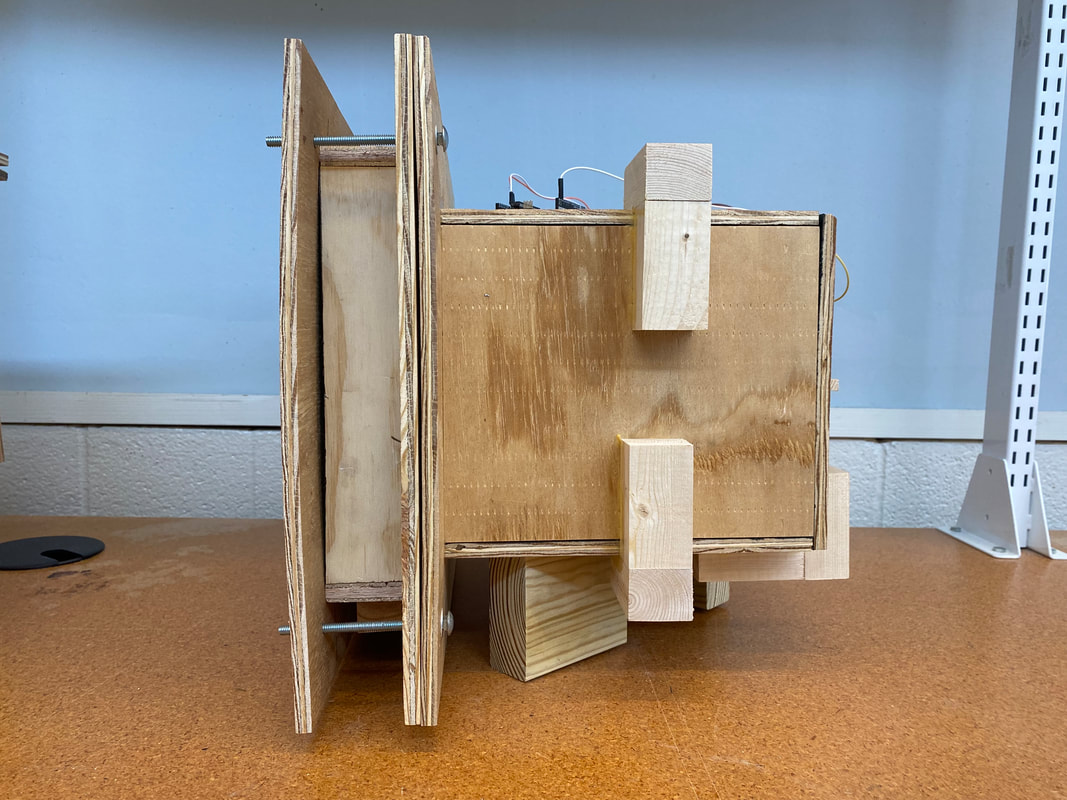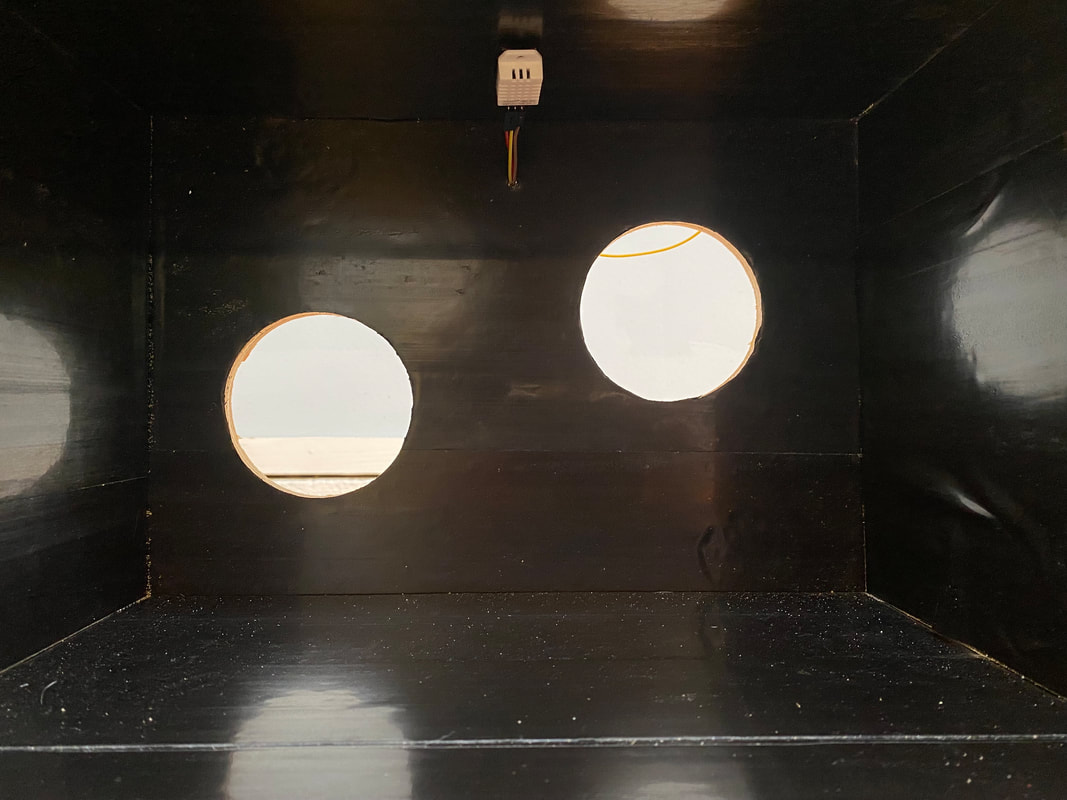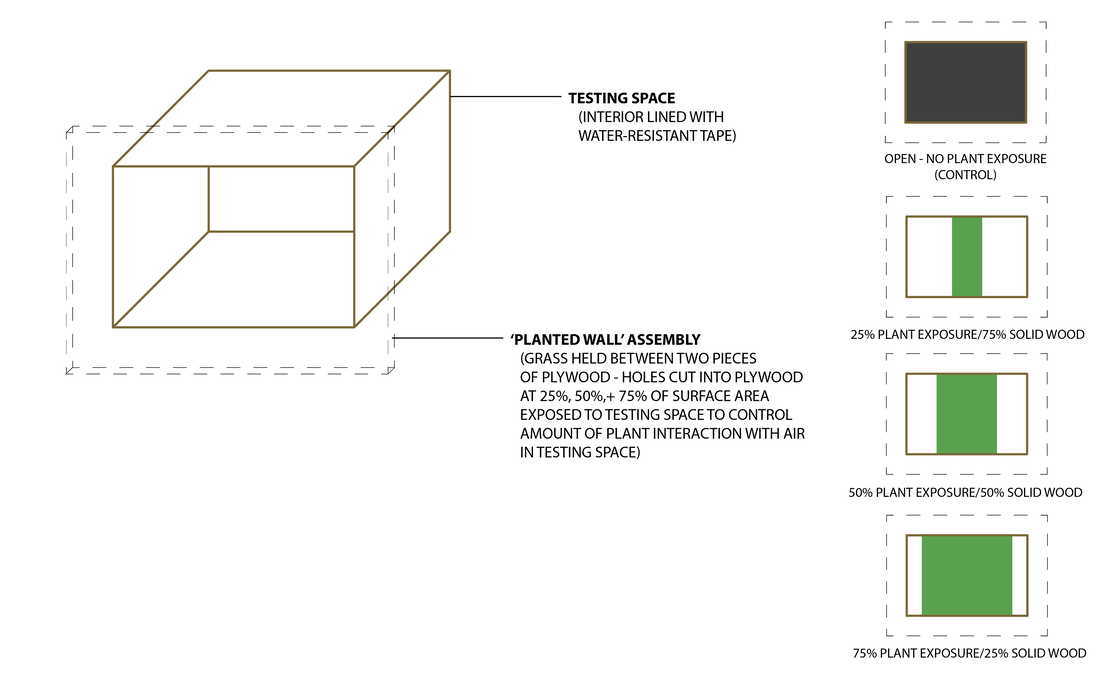Methodology
Using the testing assembly above...
Establish a baseline- measure the relative humidity, dew point, and temperature of the air within the Testing Space prior to introducing the vegetative filter.
1. Attach the vegetative assembly to the Testing Space.
2. Allow ambient air to naturally circulate within the Testing Space, interacting with the experiment 'vegetative filter' (an assembly of wood and a layer of Fescue grass exposed such that 50% of the surface area of grass interacts with the ambient air in the Testing Space) for a five minute period.
3. Measure relative humidity, dew point, and temperature of the air within the Testing Space every 5 seconds for 5 minutes.
4. REPEAT with 25% and/or 75%.
4a. Be sure to wipe down the interior of the Testing Space between iterations of this test to ensure consistent starting conditions.
* In between tests, I made sure to periodically water the grass and try to maintain the life of it as much as possible.
* Make sure to measure change in humidity, not simply amount.
Establish a baseline- measure the relative humidity, dew point, and temperature of the air within the Testing Space prior to introducing the vegetative filter.
1. Attach the vegetative assembly to the Testing Space.
2. Allow ambient air to naturally circulate within the Testing Space, interacting with the experiment 'vegetative filter' (an assembly of wood and a layer of Fescue grass exposed such that 50% of the surface area of grass interacts with the ambient air in the Testing Space) for a five minute period.
3. Measure relative humidity, dew point, and temperature of the air within the Testing Space every 5 seconds for 5 minutes.
4. REPEAT with 25% and/or 75%.
4a. Be sure to wipe down the interior of the Testing Space between iterations of this test to ensure consistent starting conditions.
* In between tests, I made sure to periodically water the grass and try to maintain the life of it as much as possible.
* Make sure to measure change in humidity, not simply amount.



